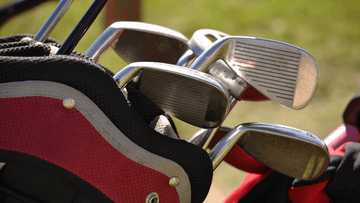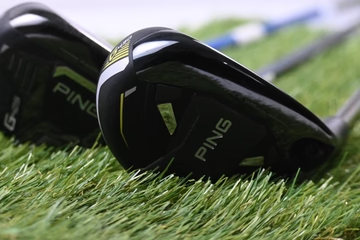The use of a driver in golf goes back over 100 years, and its evolution has three key periods which we’ll go into in more detail shortly. The first thing you need to know about drivers is that they started life being called a ‘play club’, and sometimes a ‘grass club’ or a ‘long club’.
They were made from wood that was often hand-shaped (hence the 1-wood classification) - usually persimmon wood - and this didn’t change through the 1970s right up to the mid-1980s. Faceplates made of metal (usually brass) were screwed into the wooden chassis of the driver. This plate reinforced the wood, mainly to strengthen it and preserve it from damage, but also to give the ball more velocity and distance. Demand for drivers and other golf equipment at this point was fairly low, as golf hadn’t quite taken off in popularity yet.
In the late 70s and early 80s, demand for better drivers rose significantly, and for the first time, manufacturers began to introduce steel. TaylorMade introduced one of the first original metal-headed drivers (called the 1Metal). Being much stronger than wood and easier to manufacture in large quantities, steel not only met the demand but also began to enhance golfers’ performance.
Then came the golf boom of the early 1990s, and keen golfers began to focus far more on what improvements could be made to their game by tweaking their golf equipment. By the late 90s titanium began to be introduced as a head material, and brands also started to introduce graphite for the shaft (it had traditionally been steel). The benefits to these adjustments were huge - the lighter graphite offered far greater weight-saving properties, and the enhanced strength of the titanium created a perfect combination for golfers to achieve considerably more distance.
In 2002-2003, as a direct response to the huge increments in distance that all golfers were achieving, the governing bodies (both the R&A and the USGA) worked together to reduce the driver clubface’s COR (Coefficient of Restitution - a measurement of the energy loss or retention when two objects collide) to control distance. This reduced what was called ‘the trampoline effect’ for both professional and amateur golfers.
There was one driver that became notorious through this time - the Callaway ERC driver. When the legislation for amateur golfers was enforced in 2008, a lot of pre-existing drivers were banned - so you could tell if a player was using a prohibited driver (and therefore cheating, with or without their own knowledge!).
















































